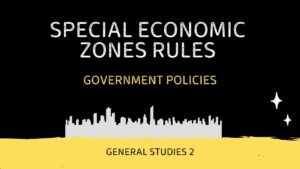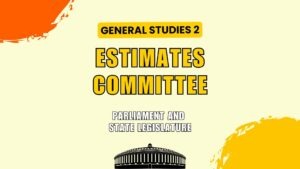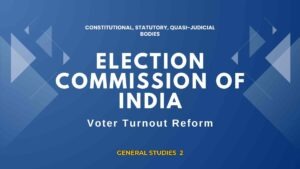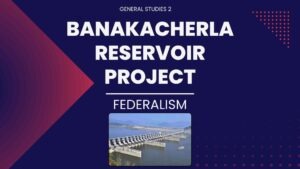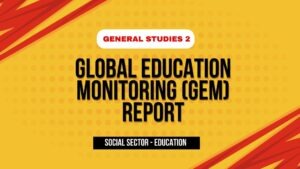National Conference of Estimates Committees - Important Notes for UPSC
National Conference of Estimates Committees
🏛️ In News
Lok Sabha Speaker inaugurated the National Conference of Estimates Committees in Mumbai to commemorate 75 years of the Parliamentary Estimates Committee.
📘 About Estimates Committee
🔹 What is it?
A Parliamentary Financial Committee of Lok Sabha.
Ensures economy, efficiency, and accountability in public expenditure.
Reviews budgetary estimates of various Ministries/Departments.
🕰️ Historical Background
Established: In 1950, post-Constitution, under the Rules of Procedure and Conduct of Business in Lok Sabha.
Modeled on the UK’s system of parliamentary control over expenditure.
👥 Composition
Total Members: 30 MPs – only from Lok Sabha.
Ministers are excluded.
Chairperson: Appointed by the Speaker of Lok Sabha.
Tenure: 1 year (renewable annually).
⚙️ Selection Process
Elected annually by Lok Sabha members through:
Proportional representation
Single transferable vote system
🎯 Key Functions
Review Government Estimates
Examines budget estimates of ministries/departments.
Suggest Policy Alternatives
Recommends more efficient or cost-effective policies.
Evaluate Efficiency of Spending
Ensures funds are used as per approved plans and policies.
Improve Budget Presentation
Suggests reforms in format and transparency of budget.
Exclude PSUs
Does not examine Public Sector Undertakings – handled by Committee on Public Undertakings.
🧩 Working Mechanism
Selection of subjects from Ministries/Departments/statutory bodies.
Seeks inputs from official and non-official sources.
Study Visits: On-ground fact-finding (with Speaker’s approval).
Formal Evidence Sessions: Conducted at Parliament.
Reports: Submitted to Lok Sabha with recommendations.
Government Response: Mandatory within 6 months via Action Taken Reports (ATRs).
🏆 Achievements
Total Reports Submitted (as of 2025): 1184
656 Original Reports
528 ATRs
Covered all major ministries and departments.
Strengthened Parliamentary Financial Oversight.
📌 Significance for UPSC
🔍 Prelims Pointers
Only Lok Sabha MPs – ✅
Ministers are excluded – ✅
Tenure = 1 year – ✅
30 Members – ✅
Elected by Proportional Representation (Single Transferable Vote) – ✅
Does not examine PSUs – ✅
📝 Mains Relevance
Important for GS Paper 2 (Polity and Governance) & GS Paper 3 (Budgeting and Fiscal Responsibility).
Role in parliamentary oversight, fiscal prudence, and public administration reform.
Can be used in case studies on financial accountability.
🔍 Comparative View: Estimates Committee vs PAC vs COPU
Estimates Committee
Nature: Ex-ante (before expenditure).
Focus: Scrutinizes budget estimates; suggests reforms for efficiency and economy.
Membership: Only Lok Sabha members (30 MPs); Ministers not allowed.
Headed by: Member of Lok Sabha, appointed by the Speaker.
PSUs?: Does not examine Public Sector Undertakings.
Reports To: Lok Sabha.
Support Material: Works independently, without CAG inputs.
Public Accounts Committee (PAC)
Nature: Ex-post (after expenditure).
Focus: Examines how money was actually spent; based on CAG reports.
Membership: Both Lok Sabha and Rajya Sabha members (22 total; 15 from LS, 7 from RS).
Headed by: Usually a member from the Opposition.
PSUs?: Reviews PSUs if CAG report flags issues.
Reports To: Parliament.
Support Material: Heavily relies on CAG reports.
Committee on Public Undertakings (COPU)
Nature: Ex-post (performance evaluation).
Focus: Reviews working of PSUs – efficiency, profitability, and investment decisions.
Membership: Both Lok Sabha and Rajya Sabha members.
Headed by: Member of Parliament (usually Lok Sabha).
PSUs?: Specifically created to examine PSUs.
Reports To: Parliament.
Support Material: Based on CAG reports and ministry data.
📌 Additional Insight
CAG Reports often feed into the work of PAC, but Estimates Committee focuses on reform suggestions before money is spent.
Strengthens participatory democracy by involving MPs directly in financial scrutiny.
Mains-Based Questions on National Conference of Estimates Committees
1. Question:
“The Estimates Committee plays a crucial role in strengthening financial accountability and ensuring efficient use of public funds.” Examine the functions, working, and significance of the Estimates Committee in this regard.
(GS Paper 2 – Polity & Governance)
✅ Answer Framework:
Introduction:
Begin with a definition:
“The Estimates Committee is a financial oversight committee of the Lok Sabha, tasked with examining how budgetary estimates are formulated and suggesting reforms for efficiency and economy in public spending.”
Body:
1. Composition & Mandate:
30 members from Lok Sabha (Ministers excluded).
Elected annually via proportional representation (STV).
Chairperson appointed by the Speaker.
2. Key Functions:
Examines budget estimates of ministries/departments.
Suggests alternative policies for economy and efficiency.
Evaluates the effectiveness of public spending.
Recommends improvements in the presentation of budget data.
3. Working Process:
Selects estimates for scrutiny.
Seeks information from official and non-official sources.
Conducts study visits and evidence sessions.
Publishes reports and recommendations.
Government must respond within 6 months through ATRs.
4. Significance:
Acts as a preventive mechanism (ex-ante).
Improves transparency and accountability in public finance.
Strengthens legislative control over the executive.
Enhances public trust in the budgeting process.
5. Limitations:
Limited to Lok Sabha; no Rajya Sabha involvement.
Cannot examine PSUs.
Recommendations are not binding.
Resource and expertise constraints.
Conclusion:
Conclude with a balanced view:
“Despite its limitations, the Estimates Committee remains a vital tool of parliamentary financial scrutiny. Strengthening its role and implementing its recommendations more effectively can enhance India’s fiscal governance.”
2. Question:
Differentiate between the Estimates Committee, Public Accounts Committee, and Committee on Public Undertakings. Do you think there is a need to revamp the role of these committees in light of growing public expenditure? Justify your answer.
(GS Paper 2 – Polity & Governance)
✅ Answer Framework:
Introduction:
Start with a general statement:
“Parliamentary committees act as mini-parliaments and ensure continuous oversight of government functioning, especially in financial matters.”
Body:
1. Comparative Overview (Point-wise):
Estimates Committee: Examines budget proposals (ex-ante), suggests reforms, 30 LS MPs.
PAC: Audits post-expenditure performance based on CAG reports (ex-post), LS + RS members.
COPU: Examines PSUs’ performance, LS + RS members, uses CAG reports.
2. Need for Revamp:
Rising complexity and volume of public expenditure.
Increased reliance on off-budget borrowings and extra-budgetary resources.
Limited resources/expertise in committees.
Delay in government response to committee recommendations.
Need for digital tools, data analytics, and subject-matter experts.
3. Suggestions for Reform:
Greater involvement of Rajya Sabha in Estimates Committee.
Ensure mandatory action on key recommendations.
Provide research and technical staff to assist MPs.
Increase transparency by publishing reports in public-friendly formats.
Encourage inter-committee coordination.
Conclusion:
“Given the changing nature of India’s fiscal landscape, a strengthened and restructured system of financial committees is essential for robust democratic governance and prudent public finance management.”
Prelims Questions based on National Conference of Estimates Committees
-
Special Economic Zones Rules – Important UPSC Notes
The Government of India has recently relaxed certain provisions of... -
National Conference of Estimates Committees – Important UPSC Notes
Lok Sabha Speaker inaugurated the National Conference of Estimates Committees... -
Election Commission of India – Important UPSC Notes
The Election Commission of India (ECI) has launched a tech-driven... -
Banakacherla Reservoir Project – Important UPSC Notes
A fresh inter-state water dispute has arisen between Andhra Pradesh... -
India-Japan Maritime Relation – Important UPSC Notes
India and Japan have intensified bilateral maritime collaboration (India-Japan Maritime... -
UNESCO Global Education Monitoring (GEM) Report
The UNESCO Global Education Monitoring (GEM) Report 2024–25 highlights that... -
Registered Unrecognised Political Parties – Important UPSC Notes
The Election Commission of India (ECI) has initiated the delisting... -
Viksit Bharat Ka Amrit Kaal Report – Important UPSC Notes
Viksit Bharat Ka Amrit Kaal Report - Important Notes for...


